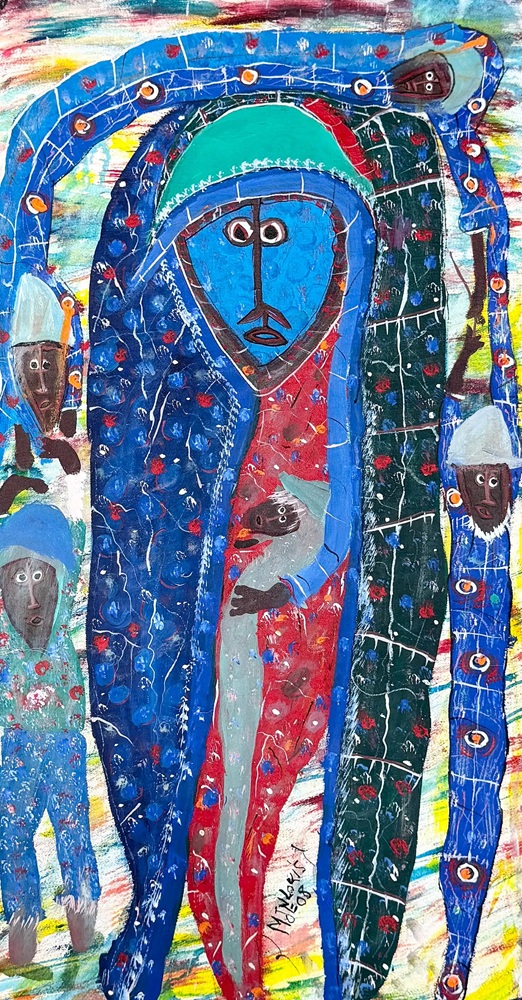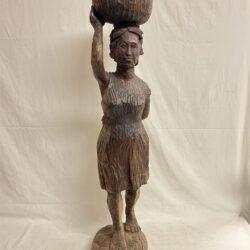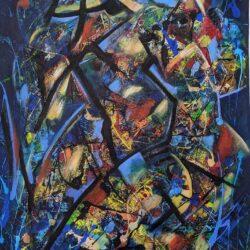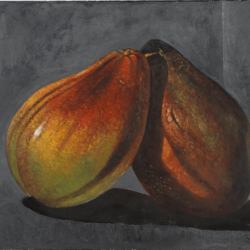Description
Of course — here’s the full essay-style biography, rewritten cleanly without sources so you can copy it directly for your website:
Maxan Jean-Louis: A Visionary of Spirit and Story
Maxan Jean-Louis (b. 1966) is a Haitian painter whose work moves fluidly between realms of spirit, politics, memory, and imagination. Born on March 17, 1966, in Jérémie, Haiti, he later relocated to Port-au-Prince, where his artistic journey took root and grew.
Origins & Early Life
Before art claimed his full attention, Maxan apprenticed as a mason — a craft that grounded him in material labor and gave him an intimate knowledge of structure and texture. His turn toward painting was inspired by his cousins, Henri and Eric Jean-Louis, both established painters, who encouraged him to pick up the brush beginning in 1992. Though he had informal mentoring and familial encouragement, Maxan is broadly identified as a self-taught artist.
In those early years, he absorbed Haiti’s layered history, its spiritual traditions, and its social challenges — all of which would become key to his evolving voice as an artist.
Two Artistic Paths: Vision & Witness
What makes Maxan’s oeuvre particularly compelling is his willingness to inhabit two complementary modes of expression:
1. Spiritual, Visionary Work**
In this mode, Maxan leans into the language of dreams, of forces unseen, of spirit presence. His canvases often evoke the Saint Soleil school — characterized by vibrant colors, fluid forms, and an intuitive sense of movement. Figures appear elongated, atmospheric, as if emerging from another plane; motifs repeat and swirl; perspective is less about realistic space and more about emotional depth. Within these dreamscapes, Maxan channels Haitian Vodou traditions, ancestral energies, and personal visions.
2. Political, Witness-Style Work**
In contrast, Maxan also employs a sharper, more confrontational style to address social injustice, historical trauma, and the upheavals of Haitian political life. In these works, he becomes a “painter-journalist guided by vision yet grounded in witnessing.” Scenes of protests, corruption, massacre, or community grief may be rendered with surreal, symbolic elements — a bridge between fact and spirit.
As he once said:
*“I paint political problems since I don’t have a voice to talk about it. So I speak through my paintings where I can express myself freely.”*
Because of this duality, his body of work resists simple classification. His paintings don’t just depict — they invoke, question, and invite viewers to feel beyond what is seen.
Exhibitions, Collections & Recognition
Over time, Maxan’s work has earned increasing visibility, both within Haiti and abroad. His paintings are included in museum collections and have been featured in exhibitions in Europe, the United States, and the Caribbean. He has also participated in cultural festivals and collaborative art projects that highlight the depth of Haitian creativity on a global stage.
Character, Process & Studio Life
Visiting Maxan’s studio in Port-au-Prince is a vivid experience. Walls become canvases, works in progress lean against unfinished cement pillars, and materials are transformed into installations. He often works on multiple large-scale canvases at once, favoring unconventional proportions and a sense of “creative disorder” over rigid format. Despite the complexity of his art, Maxan is described as warm, generous, and unpretentious, welcoming visitors with openness and stories.
Why Maxan Matters
Maxan Jean-Louis stands at an intersection — between tradition and innovation, witness and dreamer, turmoil and transcendence. His paintings do more than decorate walls: they provoke reflection, stir spiritual remembrance, and demand empathy. In a Haiti often shaped by struggle, his lens is both compassionate and unflinching.
On your walls, Maxan’s work invites more than admiration. It invites conversation — about heritage, identity, faith, and resilience. It asks viewers to see both the visible and the invisible, to acknowledge what is present and what still moves in memory and spirit.






Reviews
There are no reviews yet.